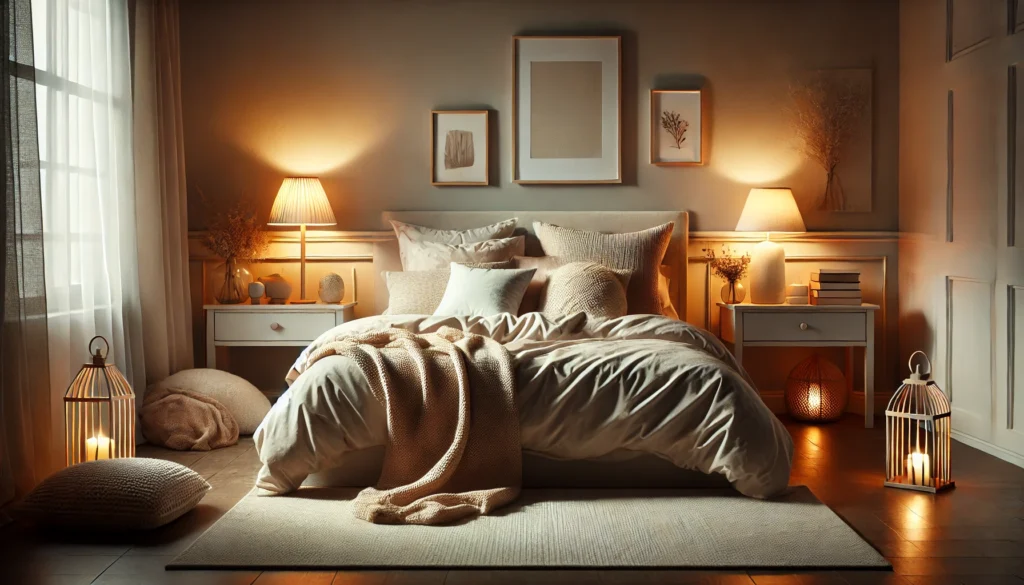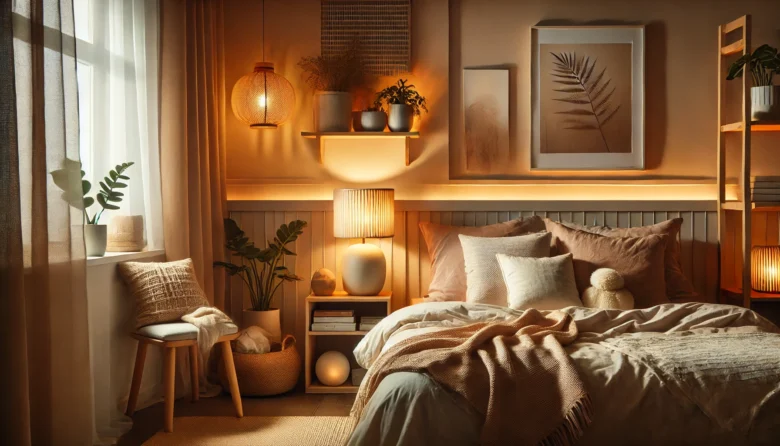Did you know? The ideal room temperature for sleep is around 65°F (18°C), which can improve sleep quality and make you feel more refreshed in the morning.
Sleep is something we all need, yet most of us struggle to get it just right. The Science of Sleep isn’t just about counting sheep or turning off screens; it’s about creating an environment that actively supports quality rest. A carefully curated sleep space can make all the difference between waking up groggy or refreshed. Let’s dive into the science behind how your environment shapes the way you sleep and discover easy, actionable changes to help you enjoy deeper, uninterrupted sleep.
The Power of Temperature: Finding the Right Balance
Temperature plays a massive role in our sleep. Our bodies naturally cool down as we fall asleep, and an optimal room temperature can help maintain this process. The recommended range is usually between 60-67°F (15-19°C).
For instance, a study from the University of Southern California revealed that people who slept in slightly cooler environments experienced longer, uninterrupted sleep. Many people use temperature-controlled mattresses or simply adjust their thermostats to reach the ideal temperature, reaping substantial benefits. So, next time you toss and turn, consider adjusting the thermostat or using a fan—your sleep might thank you.
Lighting: The Hidden Factor of Sleep Disruption
Our brains are highly sensitive to light, especially blue light from screens. Melatonin, the hormone responsible for managing our sleep-wake cycle, is reduced when exposed to light, which makes falling asleep more difficult. Even street lights sneaking through your curtains can disrupt your sleep cycles.
Studies show that exposure to natural sunlight during the day can help regulate your circadian rhythm (the body’s internal clock), improving your ability to fall asleep at night. By day, open the curtains; by night, consider blackout curtains or a sleep mask to ensure a completely dark environment.

The Role of Sound: From White Noise to Total Silence
It’s not just about what we hear but how we hear it. For some, the hum of a fan, known as white noise, can drown out disruptive sounds, creating a consistent background noise that soothes them to sleep.
For others, silence is key. A study conducted by the American Academy of Sleep Medicine found that noise disruptions, even at low volumes, can cause micro-awakenings, disturbing the quality of deep sleep. Try earplugs or white noise machines to find what works best for you.
Bedding and Comfort: Investing in Quality Sleep
The bed, mattress, and even your sheets contribute to how comfortable you feel, which in turn affects your sleep quality. An old mattress might create pressure points or cause joint pain, making it hard to stay asleep.
Investing in a mattress that suits your body type and sleep position is a worthwhile choice for anyone looking to improve sleep quality. According to research, the right bedding materials—like cotton or linen—can help regulate body temperature, making sleep more restful and comfortable.
Air Quality: The Often Overlooked Factor
Air quality directly impacts sleep, especially for those with allergies or respiratory issues. Dust, pet dander, or pollutants can make it hard to breathe, disrupting sleep throughout the night.
A high-efficiency particulate air (HEPA) filter or a dehumidifier can make a significant difference, especially if you suffer from seasonal allergies. Plants like peace lilies and snake plants also help filter the air naturally, creating a more breathable environment.
Scent and Sleep: The Soothing Power of Aromatherapy
Lavender, chamomile, and jasmine have been shown to promote relaxation and improve sleep quality. Scents can activate certain brain regions linked to relaxation, making it easier to unwind before bed.
In fact, a study published in the Journal of Advanced Nursing found that lavender oil improved sleep quality for patients. Diffusers with essential oils or even a lavender spray on your pillow can subtly signal your brain that it’s time for rest.
Conclusion
Creating the perfect sleep environment isn’t just about aesthetics; it’s a science-backed approach to achieving better rest. From temperature to light, sound to scent, small adjustments in your surroundings can help create a sanctuary for sleep. If you’re waking up tired, take a look at your sleep environment and consider what might be holding you back. After all, a well-rested body and mind start with the right setting.
Author’s Note:
Thanks for reading! If you’re looking to improve your sleep, try incorporating one change at a time to see what works best. Quality rest is within reach, and your body will thank you for it.
G.C., Ecosociosphere contributor.
References and Further Reading:
- Harvard Health Publishing: The Impact of Temperature on Sleep
- The Surprising Benefits of Sleeping Nude: Transform Your Sleep and Health | MIKOL. https://www.mikolmarmi.com/blogs/lifestyle/the-surprising-benefits-of-sleeping-nude-transform-your-sleep-and-health
- Summer Sleep Survival Guide – Ned. https://helloned.com/blogs/wellness/summer-sleep-survival-guide
- 10 Essential Tips for a Restful Night’s Sleep – Hamuq. https://hamuq.com/blogs/news/10-essential-tips-for-a-restful-nights-sleep
- Why Am I Waking Up With Sore Shoulders?. https://www.paincarecenter.com.sg/why-am-i-waking-up-with-sore-shoulders/
- 7 Genuine Sleep Habits for a Healthier You – ibloghealth.net. https://ibloghealth.net/7-genuine-sleep-habits-for-a-healthier-you/




